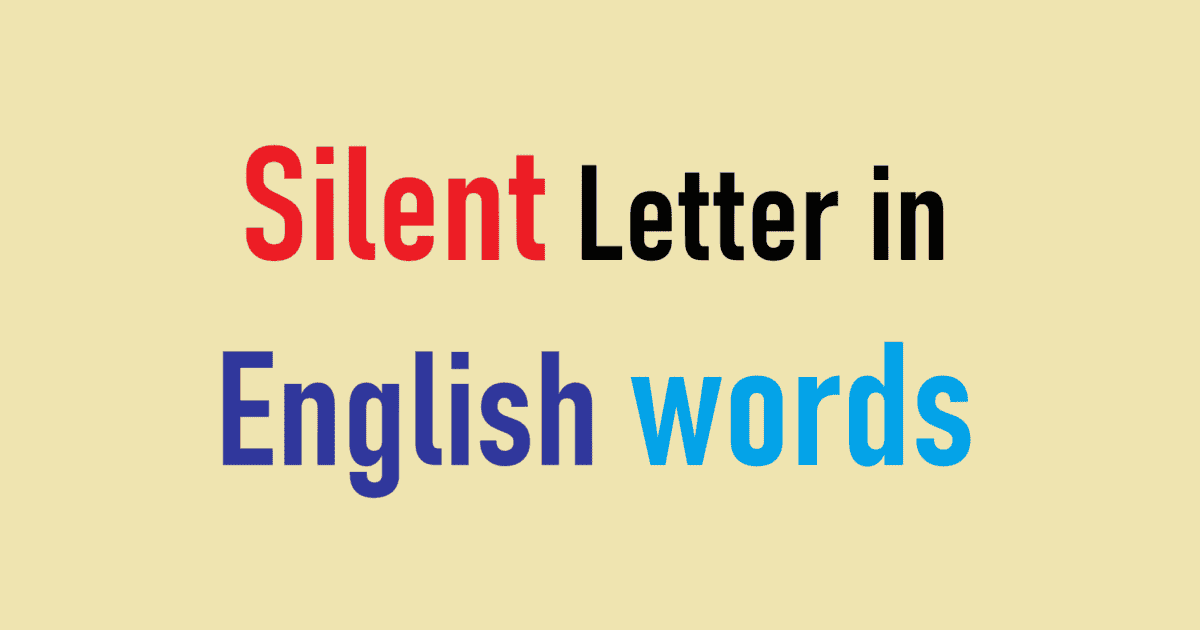English is a fascinating language, but it’s also notorious for its quirks and inconsistencies. One of the most puzzling aspects of English spelling and pronunciation is the presence of silent letters. These are letters that appear in the written form of a word but are not pronounced when the word is spoken. Silent letters can be found at the beginning, middle, or end of words, and they often leave learners of English scratching their heads.
In this blog post, we’ll explore the phenomenon of silent letters in English, categorize them, and provide extensive lists of words where these silent letters appear. Whether you’re a language enthusiast, a student, or just curious about English, this guide will help you navigate the silent labyrinth of the English language.
Why Do Silent Letters Exist?
Silent letters are remnants of the language’s historical evolution. English has borrowed words from many languages, including Latin, French, German, and Greek. Over time, pronunciations changed, but spellings often remained the same. Additionally, silent letters sometimes serve to distinguish between homophones (words that sound the same but have different meanings) or indicate the pronunciation of other letters in the word.
For example:
- The silent k in knight reflects its Old English origin, where the k was pronounced.
- The silent e at the end of hope signals that the o is pronounced as a long vowel.
Categories of Silent Letters
Silent letters can be grouped based on their position in a word:
- Silent Letters at the Beginning of Words
These are often the most confusing because they defy the expectation that the first letter of a word should be pronounced.
Examples:- K: knee, knife, know, knight
- G: gnaw, gnome, gnat
- P: psychology, pneumonia, psalm
- Silent Letters in the Middle of Words
These letters are tucked between pronounced letters and can be tricky to spot.
Examples:- B: doubt, subtle, debt
- D: Wednesday, handsome
- L: salmon, calf, half
- Silent Letters at the End of Words
These letters are often remnants of older pronunciations or borrowed words.
Examples:- E: hope, name, like
- H: oh, Sarah
- T: ballet, gourmet
Extensive List of Words with Silent Letters
Below is a categorized list of common English words with silent letters. This list is not exhaustive but covers a wide range of examples.
Silent B
- Examples: bomb, climb, comb, crumb, debt, doubt, dumb, lamb, limb, numb, plumber, subtle, thumb, tomb
Silent C
- Examples: ascend, conscience, crescent, descend, disciple, fascinate, muscle, scene, scissors
Silent D
- Examples: handkerchief, handsome, Wednesday
Silent E
- Examples: bake, bite, cake, hope, like, name, time
Silent G
- Examples: align, assign, champagne, cologne, design, foreign, gnarl, gnash, gnat, gnaw, gnome, high, light, reign, sign
Silent H
- Examples: ache, anchor, chaos, character, choir, chorus, hour, honest, honor, heir, herb, ghost, rhythm, school, stomach, thyme, what, when, where, whether, which, while, white, why
Silent K
- Examples: knee, kneel, knife, knight, knit, knob, knock, knot, know, knowledge
Silent L
- Examples: almond, balm, calm, calf, chalk, could, half, palm, salmon, should, talk, walk, would
Silent N
- Examples: autumn, column, condemn, damn, hymn, solemn
Silent P
- Examples: pneumonia, psalm, psychology, psychiatrist, ptarmigan, pterodactyl, receipt
Silent S
- Examples: aisle, island, debris, isle
Silent T
- Examples: ballet, castle, gourmet, listen, often, whistle
Silent U
- Examples: build, built, biscuit, circuit, disguise, guess, guest, guide, guitar, rogue, tongue
Silent W
- Examples: answer, sword, two, who, whole, whose, write, wrong, wrist, wrap
Tips for Mastering Silent Letters
- Practice Pronunciation: Listen to native speakers and mimic their pronunciation. Tools like dictionaries with audio pronunciations can be helpful.
- Learn Patterns: Many silent letters follow patterns. For example, kn at the beginning of a word usually means the k is silent.
- Use Mnemonics: Create memory aids. For example, “You know you don’t pronounce the k in know.”
- Read Aloud: Regular reading aloud will help you internalize the correct pronunciations.
Conclusion
Silent letters are a testament to the rich and complex history of the English language. While they can be frustrating for learners, they also add depth and character to the language. By understanding their origins and practicing their usage, you can become more confident in your English pronunciation and spelling.
Next time you encounter a silent letter, remember: it’s not just a quirk—it’s a piece of linguistic history!
